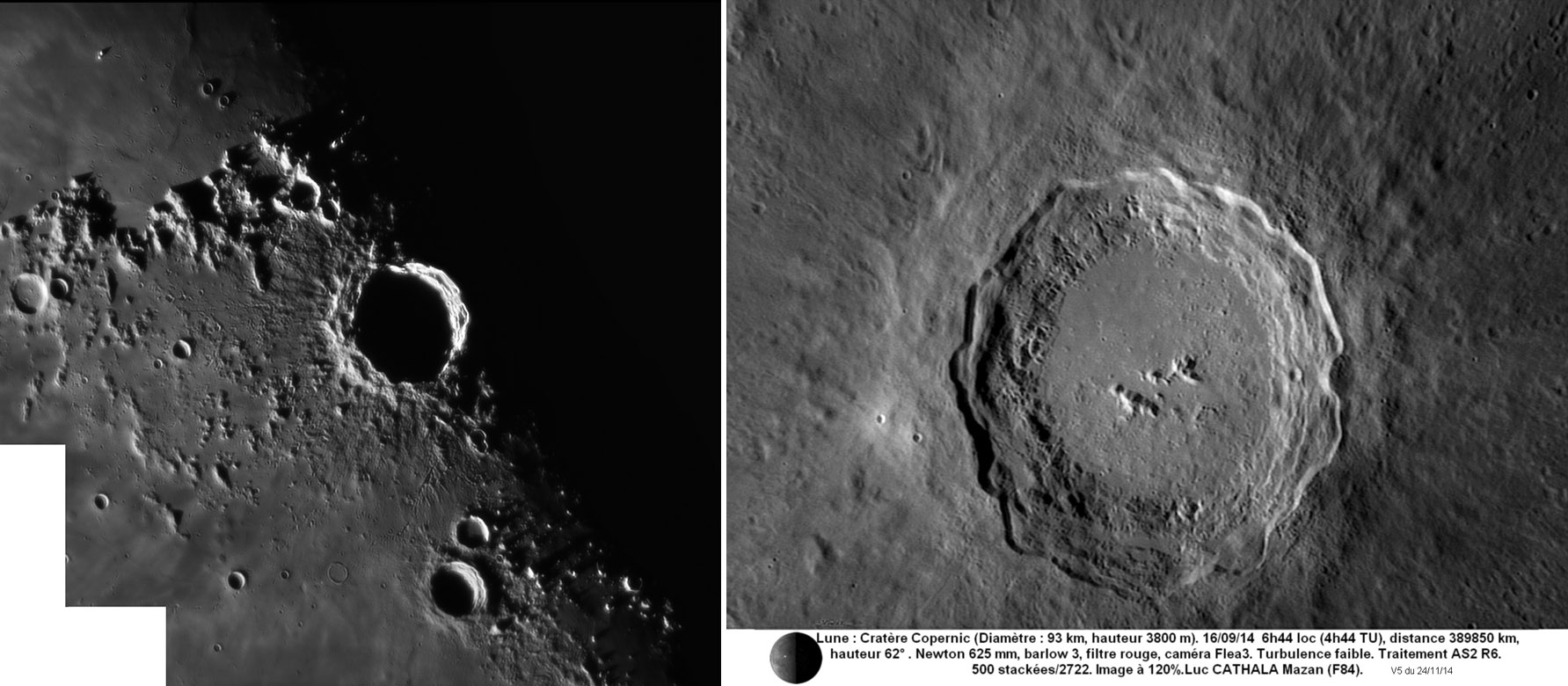November 26, 2014
Nicholas Times Two

left image by Manolo Rodríguez, El Pedroso, Seville, Spain; and right image by Luc Cathala, France
Copernicus is probably the most frequently imaged lunar feature, and certainly many views of it have appeared in LPOD. Here are different perspectives, one taken with a small backyard commercial telescope and the other with an amateur's custom-made behemoth. And both views are great as images and as geological documents. Manolo's sunset view of Copernicus illustrates radial ridges, crater chains and rays splashes, three different facies of ejecta, as well as the multitude of domes to the west. Luc's image into the interior of Copernicus has such a large scale that you could plan a traverse over the impact melt sheet covering the northwest quadrant, through the hills of debris, to the central peaks, uplifted from 10 km below the surface. Every image, from any scope, at all lightings has stories to tell. You just have to learn to read them.
Chuck Wood
Technical Details
November 16, 2014, 06:47 UT. Celestron C8, ASI 120MM camera, Powermate X2, panorama of three images. Processed with AS2!, Fitswork4 and PS CS6
Related Links
21st Century Atlas charts 17 & 22.
More of Luc's images
Yesterday's LPOD: Introducing
Tomorrow's LPOD: Knocking the Moon Over
COMMENTS?
Register, Log in, and join in the comments.



